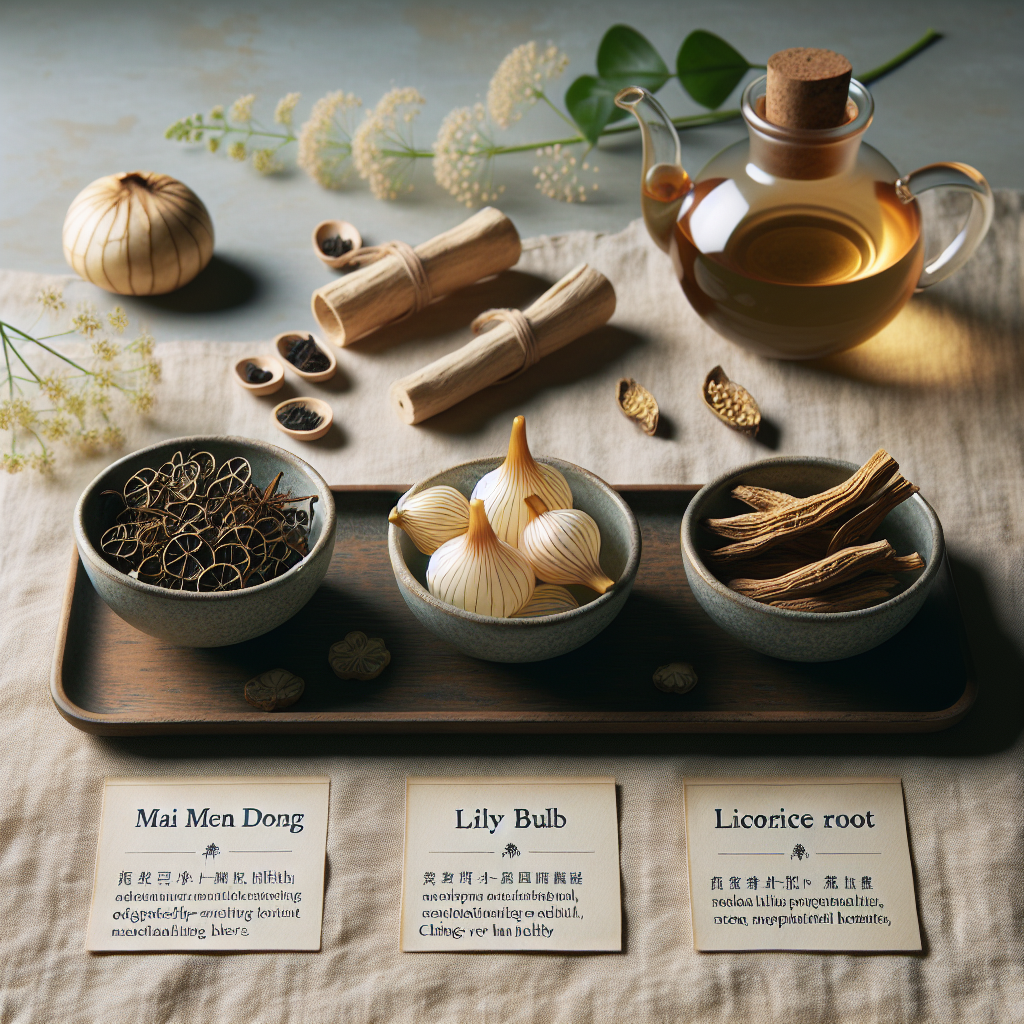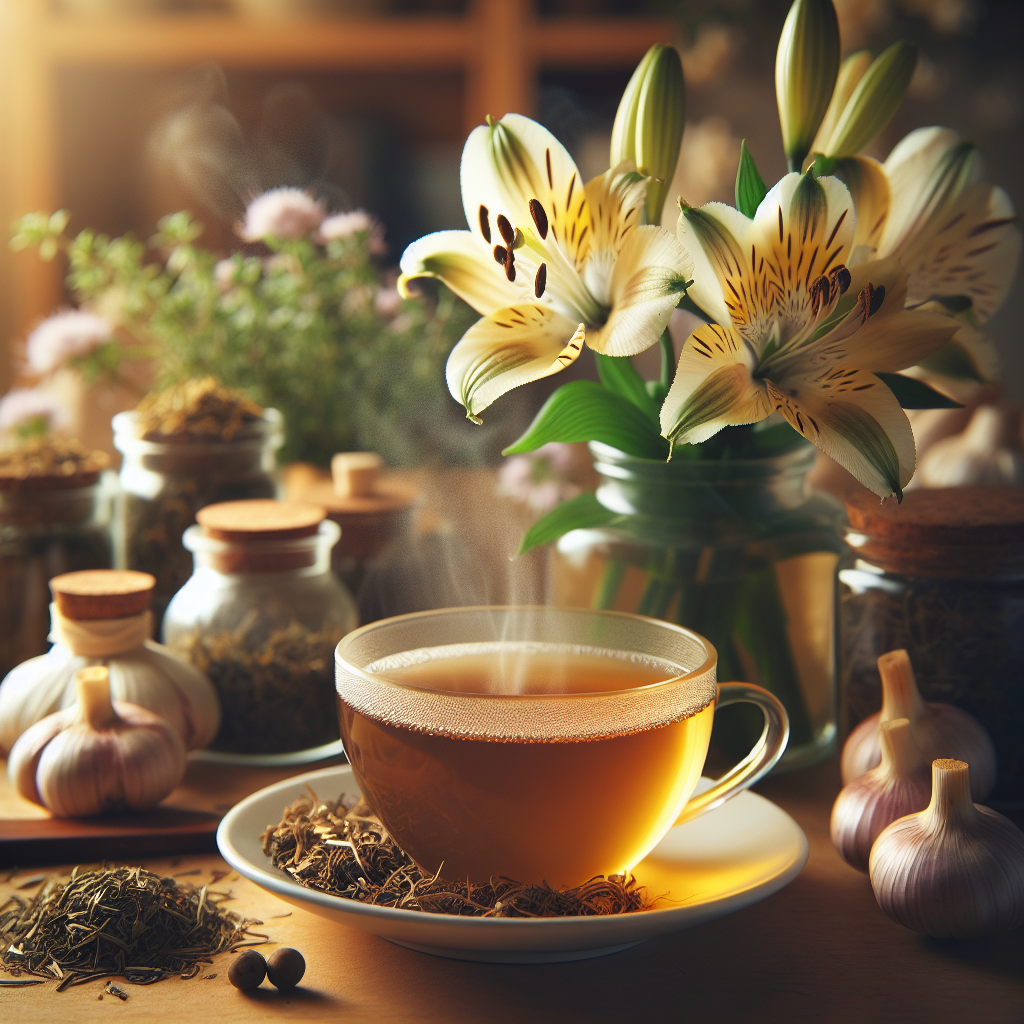Herbs That Benefit the Lungs:
A Complete Guide to Nourishing Breath, Moisture, and Qi
Every Breath Is Medicine
“When the air turns cool and dry, your lungs speak first — through your breath, your skin, and your energy.”
Traditional Chinese Medicine (TCM) teaches that the Lungs are the “tender organ”—they govern breath, control moisture, and form the body’s first line of defense.
From autumn through winter, dryness and wind can weaken Lung Qi and Yin.
The herbs below help moisten, strengthen, and protect—keeping your lungs clear, your energy balanced, and your vitality steady year-round.

Understanding Lung Health in Traditional Chinese Medicine
| Function | TCM Role | When Out of Balance |
|---|---|---|
| Govern Qi & Respiration | Draws in pure Qi (air) and circulates energy throughout the body. | Short breath, fatigue, shallow respiration. |
| Control Moisture & Skin | Disperses fluids to moisten skin, nose, and throat. | Dry cough, cracked lips, itchy skin. |
| Regulate Wei Qi (Defensive Qi) | Shields the body from external pathogens. | Frequent colds or low immunity. |
| Partner with Large Intestine | Encourages elimination and emotional release. | Constipation, grief, stagnation. |
In TCM’s Five Elements, Metal governs both the Lungs and Large Intestine. Autumn corresponds to Metal — the season of refinement and letting go.
Why Dryness Affects the Lungs
When the air loses humidity, Lung Yin (moisture) evaporates faster.
Without balance, the respiratory tract and skin lose their thin film of protection.
This leads to:
-
Tickling dry coughs
-
Rough throat or hoarse voice
-
Dry nasal passages
-
Itchy skin or lips
-
Fatigue and emotional heaviness
TCM View: Dryness consumes Yin, and without Yin, Qi cannot circulate smoothly.
Top Chinese Herbs for Lung Nourishment
| Herb | Chinese Name | Primary Function | How It Works | Category |
|---|---|---|---|---|
| Bai He (Lily Bulb) | 百合 | Moistens Lungs, calms irritability | Restores fluid balance; supports Yin | Yin-nourishing herb |
| Mai Dong (Ophiopogon Root) | 麦冬 | Nourishes Lung & Stomach Yin | Increases moisture retention in lungs | Yin-nourishing herb |
| Sha Shen (Glehnia Root) | 沙参 | Generates fluids, clears mild heat | Replenishes Lung Yin depleted by dryness | Moist-heat clearing |
| Huang Qi (Astragalus Root) | 黄芪 | Strengthens Lung Qi & Wei Qi | Improves immune defense and stamina | Qi tonic |
| Sang Ye (Mulberry Leaf) | 桑叶 | Clears Lung heat, moistens dryness | Balances heat & wind during autumn | Wind-heat herb |
| Xuan Shen (Scrophularia Root) | 玄参 | Nourishes Yin, detoxifies | Softens throat, cools internal heat | Yin tonic |
| Bai He Gu Jin Wan | — | Classic Lung Yin formula | Restores moisture and calmness to Lungs | Herbal formula |
| Sang Ju Yin | — | Clears early wind-heat | Eases cough, benefits Wei Qi | Preventive formula |
How These Herbs Work — The Science Behind TCM
| Mechanism | Modern Insight | TCM Equivalent |
|---|---|---|
| Anti-inflammatory effects | Compounds like ophiopogonin and astragaloside reduce inflammatory markers in lung tissue. | Clears heat & reduces irritation |
| Immunomodulation | Astragalus and Scrophularia help balance immune cell activity. | Strengthens Wei Qi |
| Mucosal hydration | Polysaccharides in Lily Bulb and Glehnia promote mucous membrane integrity. | Nourishes Lung Yin |
| Antioxidant activity | Flavonoids protect from oxidative stress caused by pollution and seasonal changes. | Prevents internal dryness damage |
References: PubMed articles on Withania somnifera, Ophiopogon japonicus, and Astragalus membranaceus confirm antioxidant, anti-inflammatory, and adaptogenic actions consistent with TCM function.
TCM Foods & Nutrition for Lung Health
| Food | Nature | Benefit |
|---|---|---|
| Pear | Cool, sweet | Moistens lungs, eases dry cough |
| Lotus Root | Neutral | Cools blood, harmonizes Qi |
| Almond (Sweet) | Warm, bitter | Lubricates lungs, stops cough |
| White Fungus | Neutral | Nourishes Yin, improves elasticity |
| Sesame Seeds | Neutral | Builds fluids, supports Yin |
| Ginger | Warm | Circulates Qi, prevents cold stagnation |
 Herbal Tea for Lung Moisture
Herbal Tea for Lung Moisture
Recipe: Moistening Pear & Lily Bulb Tea
Preparation time: 20 minutes
Ingredients:
-
1 dried pear slice
-
5 g Bai He (Lily Bulb)
-
3 g Mai Dong (Ophiopogon Root)
-
2 g Gan Cao (Licorice Root)
Instructions:
-
Simmer herbs in 2 cups of water for 20 minutes.
-
Strain and drink warm.
-
Enjoy 1 cup daily during dry or cool weather.
TCM view: Combines Yin-moistening and Qi-harmonizing actions to balance dryness and calm the spirit.
Breathing & Lifestyle Practices
| Practice | How It Helps | Seasonal Tip |
|---|---|---|
| Slow breathing (4-6 count inhale, 6-8 count exhale) | Strengthens Lung Qi & calm mind | Practice at sunrise for maximum Qi flow |
| Qigong or Tai Chi | Moves Lung & Large Intestine meridians | Focus on chest-opening motions |
| Protect your “Wind Gate” | Prevents external cold invasion | Keep neck and shoulders warm |
| Humidify & Hydrate | Preserves internal moisture | Use a bowl of hot water near heating vents |
| Emotional release | Transforms grief into acceptance | Journal or meditate weekly |
Comparing Popular Lung Herbs
| Feature | Bai He | Mai Dong | Huang Qi | Sha Shen |
|---|---|---|---|---|
| Moistens Lungs | ⭐⭐⭐⭐ | ⭐⭐⭐⭐⭐ | ⭐⭐ | ⭐⭐⭐⭐ |
| Strengthens Qi | ⭐⭐ | ⭐ | ⭐⭐⭐⭐⭐ | ⭐⭐ |
| Clears Heat | ⭐⭐ | ⭐⭐ | ⭐⭐ | ⭐⭐⭐ |
| Immune Defense | ⭐⭐ | ⭐ | ⭐⭐⭐⭐⭐ | ⭐⭐ |
| Emotional Calm | ⭐⭐⭐⭐ | ⭐⭐⭐ | ⭐⭐ | ⭐⭐ |
Combination Insight:
-
Pair Bai He + Mai Dong for chronic dryness.
-
Pair Huang Qi + Sha Shen for dryness with low energy.
-
Use Sang Ju Yin for early seasonal protection.
FAQs
Q: Why are the lungs called the “delicate organ”?
They interact directly with the environment through breath. Dryness, smoke, or emotion can easily disturb Lung Qi.
Q: Which formula is best for daily prevention?
Bai He Gu Jin Wan nourishes Yin, while Huang Qi Teapills strengthen immunity during cold seasons.
Q: When should I start using lung-support herbs?
Begin late summer through winter or whenever the air feels dry.
Q: Can I combine herbs and foods together?
Yes — TCM encourages synergy. A warm soup with pear and lily bulb complements herbal tea beautifully.
Shop Featured Lung-Support Herbs
-
-
Astragalus (Huang Qi) – Builds Wei Qi
-
Bai He Gu Jin Wan Teapills – Nourishes Lung Yin
-
Mai Dong (Ophiopogon Root) – Moistens dryness
-
Sang Ju Yin Teapills – Early autumn formula
-
Conclusion
Supporting your Lungs means supporting your life force.
Through mindful breath, Yin-nourishing herbs, and gentle seasonal rituals, you maintain balance, resilience, and emotional peace all year long.
Each cup of tea and each deep breath becomes a quiet act of renewal.
✍️ Authorship & Compliance
Written by: Sarah Johnson, M.S. Holistic Healing
Reviewed by: 1st Chinese Herbs Editorial Team
Published by: 1st Chinese Herbs
Last Updated: October 21 2025
Buying Bulk Chinese Herbs for Lung Support: What to Look For
If you’re purchasing bulk Chinese herbs (1–10 kg+) for clinics, families, or seasonal wellness, use this checklist to ensure quality, value, and freshness—especially for Lung-support herbs such as Bai He (Lily Bulb), Mai Dong (Ophiopogon), Huang Qi (Astragalus), and Sha Shen (Glehnia).
Quality & Sourcing Checklist
- Origin & Grade: Ask for the botanical name, harvest region, and grading (e.g., premium/first grade).
- Testing & Certificates: Request COA/third-party test results (identity, heavy metals, pesticides, microbiology).
- Cut/Size/Form: Choose the form that fits use: whole, sliced, granules, powder, teapills.
- Moisture Control: Properly dried and packaged to prevent caking or loss of potency.
- Packaging: Food-grade, light-blocking pouches or buckets; tamper-evident seals.
- Lot Traceability: Lot/batch numbers printed on bags; expiration or best-by date.
- GMP Compliance: Prefer suppliers with GMP and established QA procedures.
Storage & Shelf Life (Clinic or Home)
- Store in a cool, dry place (ideally 15–22°C), away from direct sunlight.
- Use airtight containers with desiccant packs for powders or hygroscopic herbs.
- Label clearly (herb name, lot, date opened). Rotate stock: FIFO (first in, first out).
- Typical shelf life: 18–36 months whole/sliced; 12–24 months powdered (check your COA).
Suggested Bulk Sizes & Use Cases
| Bulk Size | Best For | Typical Forms | Notes |
|---|---|---|---|
| 500 g – 1 kg | Individuals & small families (seasonal use) | Sliced, powder, whole | Good starter size; fits most home jars. |
| 2 – 5 kg | Small clinics; community prep groups | Whole/sliced (for decoctions); powder for capsules | Better unit pricing; ensure airtight storage. |
| 10 kg+ | Clinics, schools, product formulators | Whole, sliced, granules | Confirm freight, palletizing, and QA paperwork. |
